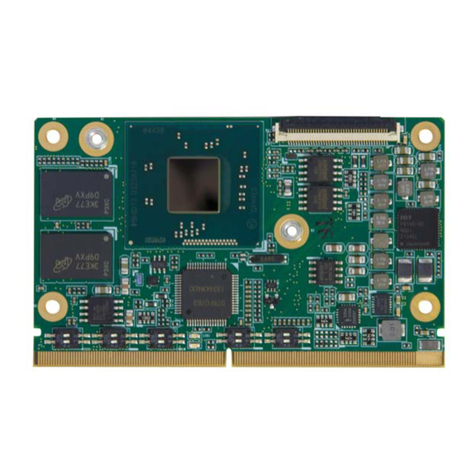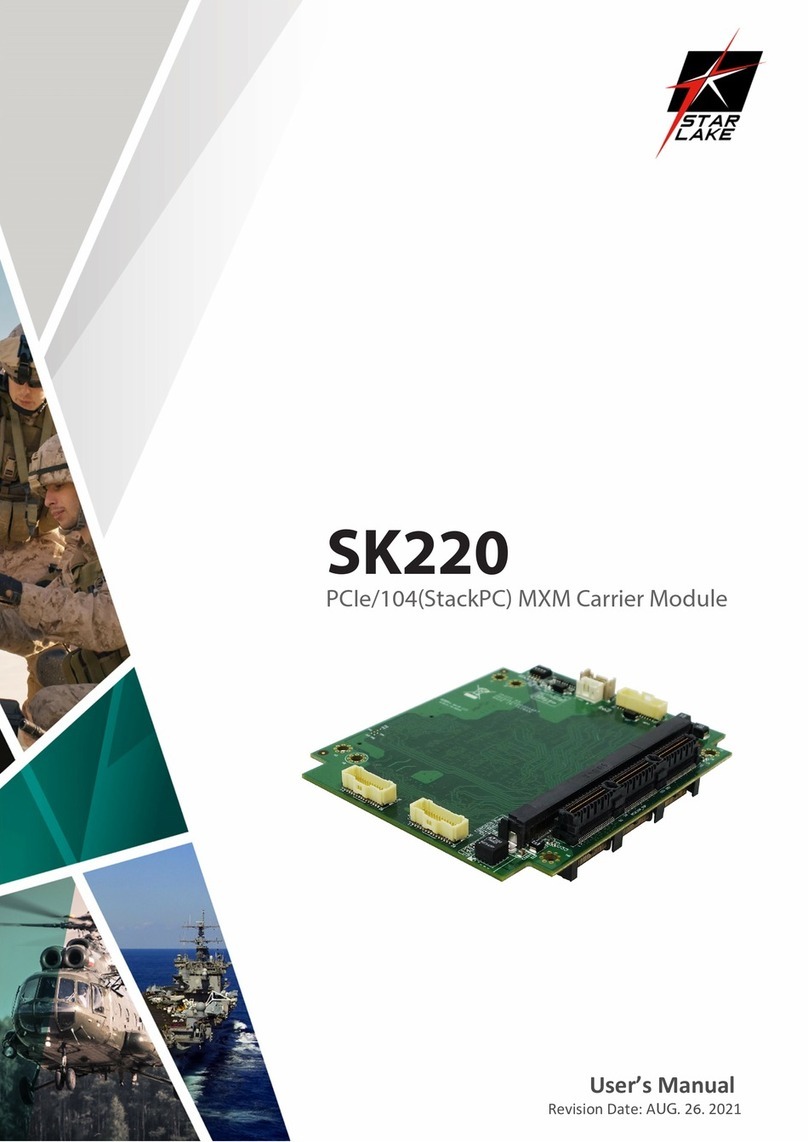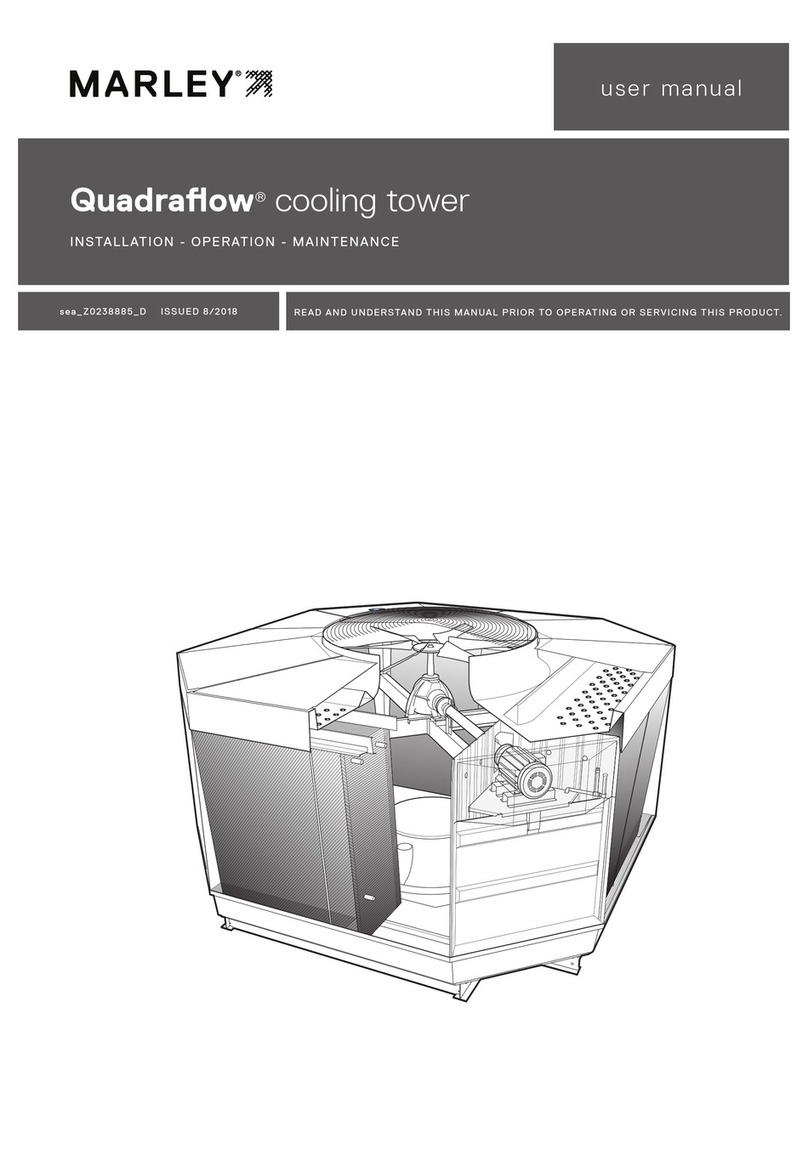SOC Robotics Wasp Operating and maintenance manual

© Copyright 2008, SOC Robotics, Inc
Manual Revision 0.89
Wasp Embedded Processor
Hard are Reference Guide
PCB Rev 1.2
Wasp Wasp Plus
www.soc-machines.com

Wasp Hardware Reference Manual
© Copyright 2008, SOC Robotics, Inc - 2 - Manual Revision 0.89
Warranty Statement
SOC Robotics arrants that the Product delivered hereunder shall conform to the applicable SOC Robotics Data Sheet or mutually
agreed upon specifications and shall be free from defects in material and orkmanship under normal use and service for a period
of 30 days from the applicable date of invoice. Products that are “samples”, “design verification units”, and/or “prototypes” are
sold “AS IS,” “WITH ALL FAULTS,” and ithout a arranty. If, during such arranty period, (i) SOC Robotics is notified
promptly in riting upon discovery of any defect in the goods, including a detailed description of such defect; (ii) such goods are
returned to SOC Robotics, DDP SOC Robotics facility accompanied by SOC Robotics Returned Material Authorization form; and
(iii) SOC Robotics examination of such goods discloses to SOC Robotics satisfaction that such goods are defective and such defects
are not caused by accident, abuse, misuse, neglect, alteration, improper installation, repair, improper testing, or use contrary to any
instructions issued by SOC Robotics. SOC Robotics shall (at its sole option) either repair, replace, or credit Buyer the purchase price
of such goods. No goods may be returned to SOC Robotics ithout SOC Robotics Returned Material Authorization form. Prior to
any return of goods by Buyer pursuant to this Section, Buyer shall afford SOC Robotics the opportunity to inspect such goods at
Buyer’s location, and any such goods so inspected shall not be returned to SOC Robotics ithout its prior ritten consent. SOC
Robotics shall return any goods repaired or replaced under this arranty to Buyer transportation prepaid, and reimburse Buyer for
the transportation charges paid by Buyer for such goods. The performance of this arranty does not extend the arranty period for
any goods beyond that period applicable to the goods originally delivered.
THE FOREGOING WARRANTY CONSTITUTES SOC ROBOTICS EXCLUSIVE LIABILITY, AND THE EXCLUSIVE
REMEDY OF BUYER, FOR ANY BREACH OF ANY WARRANTY OR OTHER NONCONFORMITY OF THE GOODS
COVERED BY THIS AGREEMENT. THIS WARRANTY IS EXCLUSIVE, AND IN LIEU OF ALL OTHER WARRANTIES. SOC
ROBOTICS MAKES NO OTHER WARRANTIES, EXPRESS, IMPLIED, OR STATUTORY, INCLUDING WITHOUT
LIMITATION ANY WARRANTIES OF MERCHANTABILITY OR FITNESS FOR A PARTICULAR PURPOSE. THE SOLE
AND EXCLUSIVE REMEDY FOR ANY BREACH OF THIS WARRANTY SHALL BE AS EXPRESSLY PROVIDED HEREIN.
Limitation on Liability
Not ithstanding anything to the contrary contained herein, SOC Robotics shall not, under any circumstances, be liable to Buyer or
any third parties for consequential, incidental, indirect, exemplary, special, or other damages. SOC Robotics total liability shall not
exceed the total amount paid by Buyer or SOC Robotics hereunder. SOC Robotics shall not under any circumstances be liable for
excess costs of re-procurement.
© Copyright 2008. SOC Robotics, Inc. All rights reserved.
SOC Robotics, Inc. makes no arranty for the use of its products, other than those expressly contained in the Company’s standard
arranty hich is detailed in SOC Robotics Terms and Conditions located on the Company’s eb site. The Company assumes no
responsibility for any errors hich may appear in this document, reserves the right to change devices or specifications detailed
herein at any time ithout notice, and does not make any commitment to update the information contained herein. No licenses to
patents or other intellectual property of SOC Robotics are granted by the Company in connection ith the sale of SOC Robotics
products, expressly or by implication. SOC Robotics products are not authorized for use as critical components in life support
devices or systems.
Pentium is a registered trademark of Intel Corporation.
Windo s, Windo s NT and Windo s XP are registered trademarks of Microsoft Corporation.
Marks bearing
®
and/or
™
are trademarks of SOC Robotics, Inc.
Terms and product names in this document may be trademarks of others.
1935A–08/00/5M

Wasp Hardware Reference Manual
© Copyright 2008, SOC Robotics, Inc - 3 - Manual Revision 0.89
Table of Contents
Warranty Statement
………………………………………………………………………2
1.0
Introduction
………………………………………………………………………….4
2.0 Detailed Description
………………………………………………………...……6
2.1 Introduction………………………………………….………………………………..…..…7
2.2 Processor...…………………………………….………..……………………………..……7
2.3 Real Time Clock...……………………..………………………….……….…………..……7
2.4 External Serial Flash...…………………..………………………………..…………..……7
2.5 TWI Port...…………………………………………………………………….….……..……7
2.6 Expansion Ports...……………………………..……………………………..………..……7
2.7 Battery Holder...…………………………………..……………………………..……..……8
2.8 ISP Programming...……………………………………………………………..……..……8
2.9 Optional Components...……………………….………………………………..……..……9
2.10 Molex Connector……………………………………………………………………....…10
2.11 Related Peripherals…………………………………………………………..…..…...…10
2.12 Applications……………………………………………………………………………….11
3.0 Hardware Expansion Port Summary
…………………………….………..11
3.1 Introduction………………………………………………………………………….…..…11
3.2 Expansion PORT A……..……………………….…………………….…………….….…12
3.3 Expansion PORT B ………...……..………………………………………………………12
3.4 Expansion PORT C/D.…………………….………………………….……………..….…13
3.5 TWI I2C Expansion Port .……………..……………………………………………..……13
3.6 Board Power Connector and Battery Holder……………………………………………14
4.0 Electrical and Mechanical Description
…………………………..….……14
4.1 Component Layout…………………………………………………………………...……14
4.2 Electrical Specifications……………………………………………………………...……15
4.3 Mechanical Dimensions ……………………………………………….…………….……15
5.0 Schematics
…………………………………………………………………....……16

Wasp Hardware Reference Manual
© Copyright 2008, SOC Robotics, Inc - 4 - Manual Revision 0.89
1.0 Introduction
Features:
•
8bit RISC AVR Processor (ATmega644)
•
8MHz External crystal oscillator
• 8ch 10 bit A/D
• 15 Digital IO
• SPI Port
• TWI I2C Port
•
64K Internal Program Flash
•
2K Internal EEPROM
•
4K Internal SRAM
•
512K/1M/2M/4M/8Mbyte External Serial Flash
•
ISP Programming Port
•
Machine pins on J1, J2, J3 to enable stacking
•
32.756KHz External Clock crystal
•
GNU C Compiler, Third Party Commercial C Compiler
•
Example application included for rapid application development
•
Extremely Small form factor (1.47x1.15 in)
• 1.8-5VDC @ 12ma Po er input
• Optional Components:
o Light Sensor
o Temperature Sensor
o 3-Axis Accelerometer
o 16 bit A/D
o 16 bit D/A
o 20MHz Crystal
Hardware
The Wasp is an extremely compact embedded processor for mobile data acquisition, control and remote
monitoring applications. The Wasp by default is shipped ith an ATmega644 processor although t o
other processors are available by special order: the ATmega16 and ATmega32. The ATmega644 has the
added benefit of being able to generate an interrupt on any pin transition (lo to high or high to lo ). All
three processors are members of Atmel AVR processor family. Each processor has internal Flash, SRAM,
EEPROM, SPI, TWI (I2C), UART, 8 channel 10bit A/D and general purpose IO. The Wasp has an internal
8MHz oscillator but is shipped ith an external 8MHz crystal. An external 32.756KHz crystal is provided
on the board to allo the creation of a real time clock for timed soft are execution.
The Wasp consumes about 12ma in active state and about 0.6ma in standby. By changing the internal
clock and reducing po er to certain peripherals it is possible for the Wasp to operate ith very lo
po er consumption. The Wasp is programming using an ISP Programming Adapter such as the ISP10.
The Rev 1.2 PCB has connectors J1, J2 and J3 on 0.1” pin spacing so prototype daughter cards can easily
be attached to the top or bottom of the board making custom circuit design possible ithout the need for
a custom PCB. Included on the CD is an Eagle CAD layout template of the connectors to facilitate the
development of custom circuits.

Wasp Hardware Reference Manual
© Copyright 2008, SOC Robotics, Inc - 5 - Manual Revision 0.89
Software
The Wasp is programmed in C using either a GNU C Compiler, AVR Studio V4.13 or higher ith GNU C
integrated ith the IDE or a third party IDE such as ICCAVR from ImageCraft. The ATmega644 may not
be programmable ith ICCAVR so a special utility (ISProg.exe) is available to program the processor.
Check the SOC Robotics eb site .soc-robotics.com for program examples and ICCAVR project
files. ICCAVR project files are on the included CD. Example code is provided to read the accelerometer,
communicate on the I2C port, read the 16 bit A/D, rite the 16 bit D/A and ho to use the UART.
The example Project files that come ith the Wasp ere ritten using the ImageCraft ICCAVR Windo s
IDE. With the release of AVR Studio V4.13 the open source AVR GNU C Tool chain is no integrated
ith the AVR Studio V4 Windo s IDE and is recommended for cost sensitive development projects. The
ImageCraft IDE is a lo cost commercial C development environment and includes support for 64bit
floating point numbers in the PRO version.
Configurations
The Wasp is available in several configurations. The table belo summarizes the different Wasp
configurations. Note that in order to run at the maximum clock speed of 20MHz the board must be
po ered at 5V. Wasps ith 3.3V peripherals must be po ered at 3-3.3V and consequently can only run
at 8MHz.
Product
Name
Crystal
Speed 3-Axis
Accelerometer
3.0-3.3V
16 Bit
Analog Serial
Flash
3.0-3.3V
Light
Sensor
Thermistor
Machine
Pins
WaspL 20MHz No No No No No CISP Only
Wasp 8MHz No No Yes No Yes Yes
WaspG 8MHz Yes No No No Yes Yes
WaspA 20MHz No Yes No No Yes Yes
WaspP 8MHz Yes Yes Yes Yes Yes Yes
Configurations ith Serial Flash have a choice of Flash size – see the table belo .
Flash Size
(bytes) Chip
Designation
512K AT45DB041D
1M AT45DB081D
2M AT45DB161D
4M AT45DB321D
8M AT45DB642D
There is also a choice of t o different battery holders – coin cell (3V) and 1/2AA (3V).

Wasp Hardware Reference Manual
© Copyright 2008, SOC Robotics, Inc - 6 - Manual Revision 0.89
2.0 Wasp
Detailed Description
2.1 Introduction
The Wasp is an extremely compact embedded processor for mobile data acquisition, control and
monitoring applications. Programmed in C and po ered by a coin cell the Wasp is an excellent
embedded processor platform for small mobile applications.
Figure 2-1.
P ima y Components on top and bottom sides of PCB.

Wasp Hardware Reference Manual
© Copyright 2008, SOC Robotics, Inc - 7 - Manual Revision 0.89
Figure 2-2.
Wasp Expansion po t pin assignments.
2.2 Processor
The Wasp has an 8bit RISC AVR processor. The Wasp accepts either an ATmega16, ATmega32 or
ATmega644 ith 16K, 32K or 64Kbytes of internal Flash, 1K, 2K or 4Kbytes of internal SRAM or 512, 1K
or 2Kbytes of internal EEPROM. Each processor has a UART, SPI port, TWI I2C, 8 Channel 10 bit A/D,
digital IO ports, interrupts and timer/counter pins. A detailed device datasheet is available from the
Atmel eb site providing very detailed information on the internal peripherals.
The Wasp has a pad for an external crystal – the default crystal is 8MHz although an optional 20MHz
crystal is available. Note that the ATmega644 requires 5VDC to run at 20MHz. Check the configuration
of the Wasp before po ering at 5VDC so no installed components are damaged.
Nominal po er consumption of the board is 12ma. If internal peripherals are turned off and the
processor placed in a sleep state po er drops belo 1ma.
2.3 Real Time Clock
A 32.756KHz clock crystal is connected to pins PC6/7 driving internal Timer 2. By setting up an
interrupt routine on TIMER2 it is possible to create a time of day real time clock or to calibrate the
internal 8MHz oscillator. The real time clock can be configured to ake the processor from a sleep state
to reduce po er consumption dramatically.
2.4 External Serial Flash
The Wasp has an ATDB45041 512Kbyte Serial Flash. The AVR communicates ith the Serial Flash using
the SPI lines. The Wasp is compatible ith the AT45DB081 (1M), AT45DB161 (2M), AT45DB321 (4M) and
AT45DB642 (8M) so higher capacity Flash can be mounted in place of the AT45DB041. The Serial Flash
requires 3-3.3VDC so if this component is installed the Wasp should not be po ered above 3.3V.
2.5 TWI Port
The Wasp has a TWI I2C port for communicating ith smart peripherals or other I2C peripherals. The
TWI port uses a 4 pin Molex connector ith po er and ground so the Wasp can po er other peripherals
or be po ered itself via this connector.
2.6 Expansion Ports
The Wasp has three expansion ports. PORTA, PORTB and PORTC - PORTA has analog inputs, digital IO,
PORTB has SPI and PORTD has UART and TWI. The Wasp is supplied ith small machine pins that
allo mounting on both sides. These can be removed or be replaced ith 0.1” pin headers.

Wasp Hardware Reference Manual
© Copyright 2008, SOC Robotics, Inc - 8 - Manual Revision 0.89
2.7 Battery Holders
The Wasp can be configured ith t o different battery holders: coin cell and 1/2AA. The battery holders
mount on the back of the Wasp. Ensure the 1/2AA battery holder is installed ith the correct polarity –
there is no reverse polarity protection po er diodes on the Wasp board. The Wasp is supplied ith an
unmounted coin cell holder.
2.8 ISP Programming
The Wasp is programmed using an ISP10 Parallel Port programming adapter or any 10pin Atmel ISP
compatible programming adapter. The Wasp is supplied ith a CISP adapter that converts the Wasp
programming pins on J2 to an Atmel compatible 10pin adapter. The CISP attaches to connector J2 located
on the top edge of the board – attach as sho n in the picture belo . The Wasp can also be programmed
using a USB10 USB 2.0 peripheral.
Figure 2-4.
CISP ISP Adapte and co ect attachment to the Wasp .

Wasp Hardware Reference Manual
© Copyright 2008, SOC Robotics, Inc - 9 - Manual Revision 0.89
2.9 Optional Components
The Wasp has pads for five optional components – 16 bit A/D, 16 bit D/A, temperature sensor, light
sensor and 3-axis accelerometer.
16 Bit A/D
The optional 16 bit A/D is a Burr-Bro n ADS1101. The A/D operates from 2.7 to 5VDC, performs up to
128 conversions per second, communication ith the AVR is via an I2C interface (address 0x49), has four
programmable gain levels of 1,2,4 and 8 and consumes 90uA. The A/D has a pull up or pull do n
resistor (not installed) on –VIN. The A/D inputs are connected to pin 2 (+VIN) and pin 3 (-VIN) of
connector J6. J6 is a five pin Molex picoBlade connector.
16 Bit D/A
The optional 16 bit DAC is a Burr-Bro n DAC8501. The DAC operates from 2.7 to 5VDC, settles in
10usec, has a multiplying-mode band idth of 350KHz, is ritten too via the SPI lines and consumes
250uA at 5V. DAC output is pin 4 of connector J6. J6 is a five pin Molex picoBlade connector.
Temperature Sensor
The optional thermistor R9 (0402) is mounted on the bottom of the board. The thermistor requires load
resistor R8 (0402). Match the value of R8 to provide the best range for R9.
Light Sensor
The optional light sensor LT1 can be mounted on the top or bottom of the board. The Light sensor
requires load resistor R13 (0402). A light sensor such as PDV-P9 can be used.
3-Axis Accelerometer
The optional 3-Axis accelerometer is a Freescale Semiconductor MMA7260. The MMA7260 has four
programmable acceleration ranges- 1.5G, 2G, 4G and 6G set by the ATmega644. The MMA7260 operates
from 2.2 to 3.6Vdra ing 500uA so the Wasp should not be po ered higher than 3.6V hen the
accelerometer is installed. The accelerometer has a sensitivity of 0.02g (1.5g setting), a band idth of
350Hz (XY) 150Hz (Z), non-linearity less than 1% and a cross-axis sensitivity less than 5%.
Figure 2-5.
Optional senso locations and components installed on Wasp.

Wasp Hardware Reference Manual
© Copyright 2008, SOC Robotics, Inc - 10 - Manual Revision 0.89
The accelerometer is oriented ith the X+ on the long axis of the PCB to ard Port A connector J1, Y+ on
the short axis of the PCB to ard Port B connector J2 and Z+ pointing up out of the board.
2.10 Molex Connectors
The Wasp uses t o small Molex picoBlade 4 pin and 5 pin male connectors ith 1.25mm pin spacing (4
pin Molex Part No. 53048-0410 - Digikey Part No. WM1744-ND - 5 pin Molex Part No. 51021-0500 –
Digikey part no. WM1745-ND). These connectors mate ith female Molex 4 and 5 pin housing
connectors (4 pin housing Molex Part No. 51021-0400 - Digikey Part No. WM1722-ND – 5 pin housing
Molex Part No. 51021-0500 - Digikey Part No. WM1723-ND).
The housing connectors has t o different crimp terminal types: 26-28AWG (Molex Part No. 50079-8000 -
Digikey Part No. WM1722-ND – Crimp tool 63811-0300 ) and 28-32AWG (Molex Part No. 50058-8000 -
Digikey Part No. WM1775-ND - Crimp tool 63811-0200).
2.11 Related Peripherals
The Wasp attaches to or can communicate ith other SOC Robotics Embedded Processor devices such as
the SmartLCD, USB10, Ant6, Cricket and other peripherals. In addition a number of positioning and
display devices attach directly to the Wasp such as a GPS receiver and small Color LCD.
USB10 is a USB 2.0 device ith an onboard AVR processor – the AT90USB162. The USB10 UART
connects directly to the Wasp UART providing a serial communication path bet een the Wasp and a PC
via USB. The Wasp and USB10 SPI lines are also connected providing an additional high speed
communication link bet een the Wasp and PC.
Wasp mounted on a USB10 communications board. Ant6 6 Channel H-Bridge Controller

Wasp Hardware Reference Manual
© Copyright 2008, SOC Robotics, Inc - 11 - Manual Revision 0.89
Color LCD display that attaches directly to Wasp. SmartLCD display that communicates via I2C.
In development is a ne a navigation sensor daughter card ith one or t o dual axis gyros and
electronic compass.
2.11 Applications
The Wasp is a small, battery po ered, lo po er, embedded processor ith up to 8Mbytes of serial flash
for storage of data measurement data, 8 10 bit analog input channels and up to 14 digital IO channels.
When combined ith the GPS option the device becomes a mobile position sensor for tracking
applications. The 16 bit analog interface provides high precision analog data for special applications.
The USB10 provides a simple high speed communications interface ith a PC for rapid transfer of data to
the host PC. The USB10 also allo s the PC to program the Wasp ithout the need for a ISP10 CISP
combination.
Wasps can be stacked to increase processing horsepo er. For example ten stacked Wasps operating at
5V ould have a combined processing speed of 200MIPs, or a combined storage capacity of 80mbytes at
3.3V. The picture belo sho s a Wasp stacked ith a USB10 on the bottom and three WaspARM
processors. The WaspARM has the same features as a Wasp but ith the ATmega644 replaced ith an
AT91SAM7S32 ARM7 processor running at 55MHz. By stacking Wasps processing po er can be
increased in increments ensuring that a Wasp solution can address a ide range of embedded processing
applications.

Wasp Hardware Reference Manual
© Copyright 2008, SOC Robotics, Inc - 12 - Manual Revision 0.89
3.0 Wasp Hardware Expansion Port Summary
3.1 Introduction
The Wasp has three I/O expansion ports, po er port, I2C port and 16 bit A/D-D/A port as sho n in the
connector layout diagram belo .

Wasp Hardware Reference Manual
© Copyright 2008, SOC Robotics, Inc - 13 - Manual Revision 0.89
3.2 Expansion PORT A
AVR PORTA is routed to connector J1.
3.3 Expansion PORT B
AVR PORTB is routed to connector J2.
Figure 3-3.
PORTA Pin Assignment J1.
Figure 3-4.
PORTB Pin Assignment J2.

Wasp Hardware Reference Manual
© Copyright 2008, SOC Robotics, Inc - 14 - Manual Revision 0.89
3.4 Expansion PORT C/D
AVR PORTS C/D is routed to connector J3.
3.5 TWI I2C Expansion Port
The TWI I2C lines are routed to connector J3 and a separate 4 pin Molex connector J5 (4 pin Molex
picoBlade connector). J5 is compatible ith the SOC Robotics Smart Peripheral family of motor
controllers, LCD displays and data acquisition modules.
Figure 3-5.
PORTC/D Pin Assignment J3.
Figure 3-6.
TWI I2C Po t with 4 Pin Molex picoBlade Connecto .

Wasp Hardware Reference Manual
© Copyright 2008, SOC Robotics, Inc - 15 - Manual Revision 0.89
3.6 Board Power Connector and Battery Holder
Wasp po er may range from 1.8 to 5VDC. Voltage level should not exceed 3.3V if the serial flash and
accelerometer is installed. Po er connect J4 is indicated in the picture belo . A coin cell battery holder
or 1/2AA battery holder can also be mounted on the board providing complete mobility.
3.7 ISP Programming Port
The ISP Programming port is on connector J2. See the Atmel ISP programming specification for detailed
ATmega16/32/644 programming procedures. The CISP converts the 7 pin ISP signals to a standard 10
pin Atmel ISP header. The ISP10 parallel port ISP programmer (Figure 3-9) is used to program the Wasp
using anyone of the follo ing soft are utilities - ISProg.exe (SOC Robotics, Inc utility), AVRDude,
ICCAVR IDE or PonyProg. The USB10 can also be used to program the Wasp.
Figure 3-8.
ISP P og amming Po t and CISP Adapte Connection.
Figure 3-9.
ISP10 Pa allel Po t p og amming adapte .
Figure 3-7.
Wasp Batte y Mounting holes and Powe Connecto .

Wasp Hardware Reference Manual
© Copyright 2008, SOC Robotics, Inc - 16 - Manual Revision 0.89
4.0 Electrical and Mechanical Description
4.1 Component Layout
Components are mounted on both sides of the board. Not all components may be mounted. See the
section on optional components for more information.

Wasp Hardware Reference Manual
© Copyright 2008, SOC Robotics, Inc - 17 - Manual Revision 0.89
4.2 Electrical Specifications
Electrical
Input po er: 1.8-5VDC @ 12ma
Voltage is limited to 3-3.3VDC hen Serial Flash and accelerometer installed
Sleep Mode: 0.7ma
Mechanical
Dimensions: 1.47x1.15 in (one mounting hole)
Weight: 6 grams
4.3 Mechanical Dimensions
Board dimensions are stated in inches. Connectors J1, J2 and J3 are positioned on 0.1” pin spacing so the
Wasp is easily mounted directly on any standard 0.1” prototyping board.
A sample schematic ith connector library and board layout in Eagle CAD format is available at
www.soc-machines.com/download/wasplayout.htm
.

Wasp Hardware Reference Manual
© Copyright 2008, SOC Robotics, Inc - 18 - Manual Revision 0.89
5.0 Wasp Rev 1.2 Schematics

Wasp Hardware Reference Manual
© Copyright 2008, SOC Robotics, Inc - 19 - Manual Revision 0.89

Wasp Hardware Reference Manual
© Copyright 2008, SOC Robotics, Inc - 20 - Manual Revision 0.89
This manual suits for next models
1
Table of contents
Popular Computer Hardware manuals by other brands
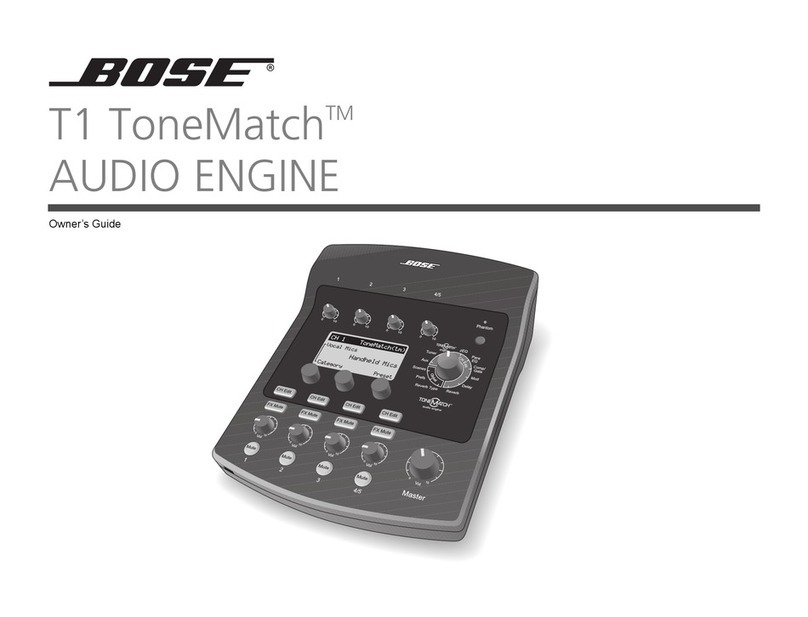
Bose
Bose T1 ToneMatch owner's guide
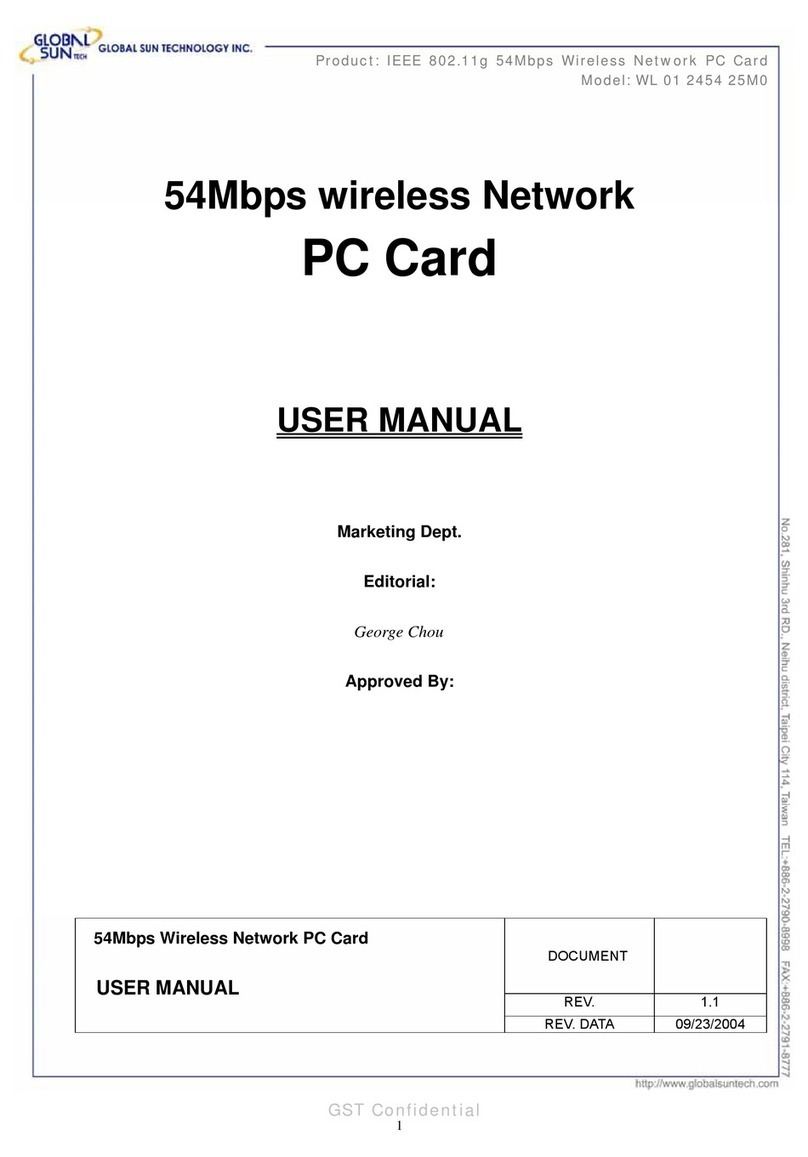
Global Sun Tech
Global Sun Tech WL 01 2454 25M0 user manual
Cypress Semiconductor
Cypress Semiconductor CY7C144 Specification sheet
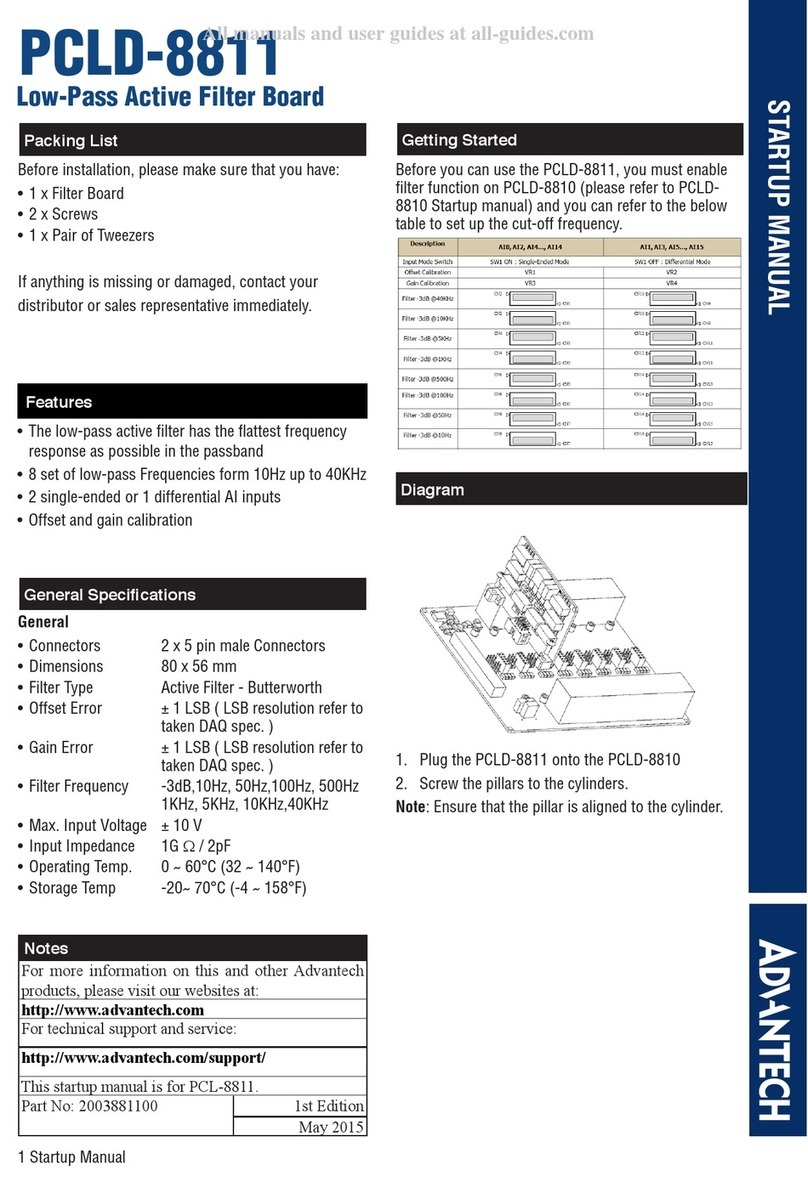
Advantech
Advantech PCLD-8811 Startup manual
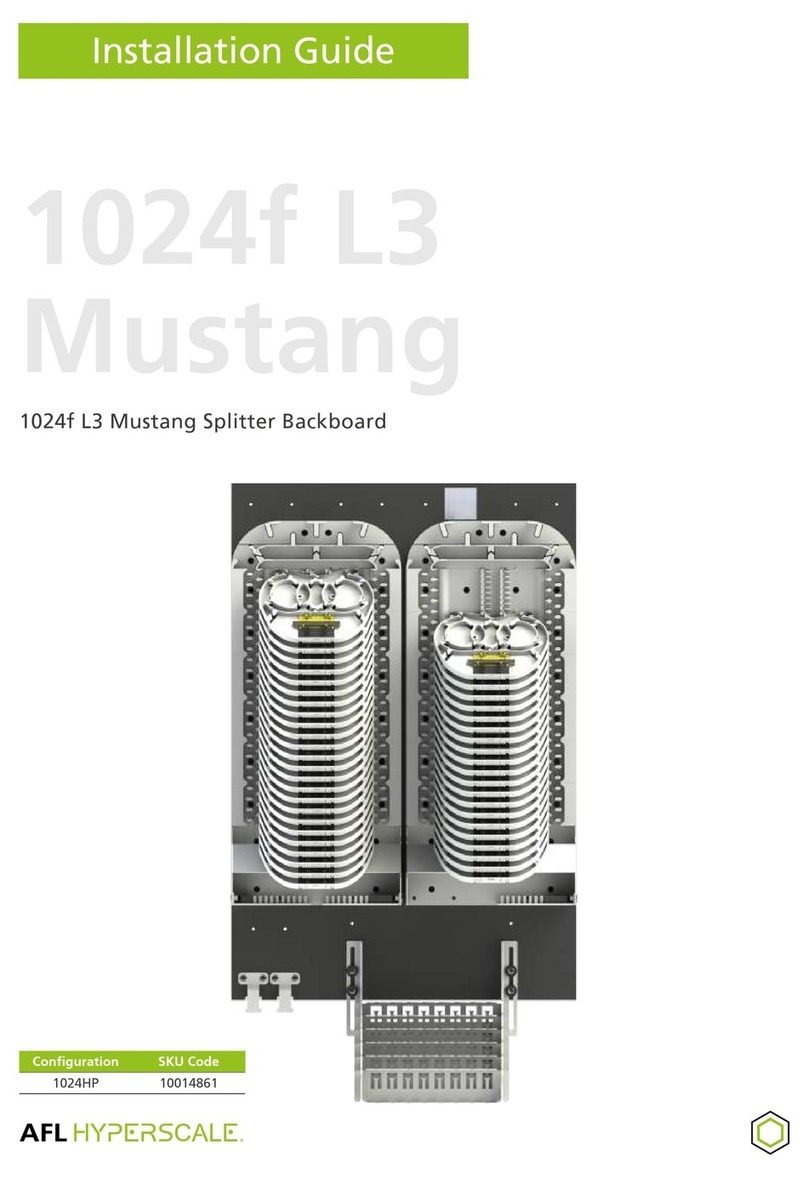
AFL Hyperscale
AFL Hyperscale 1024f L3 Mustang installation guide
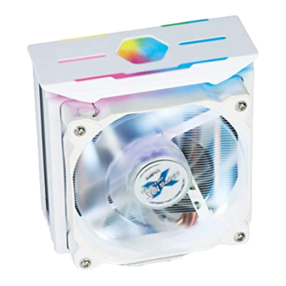
ZALMAN
ZALMAN OPTIMA II CNPS10X user manual

